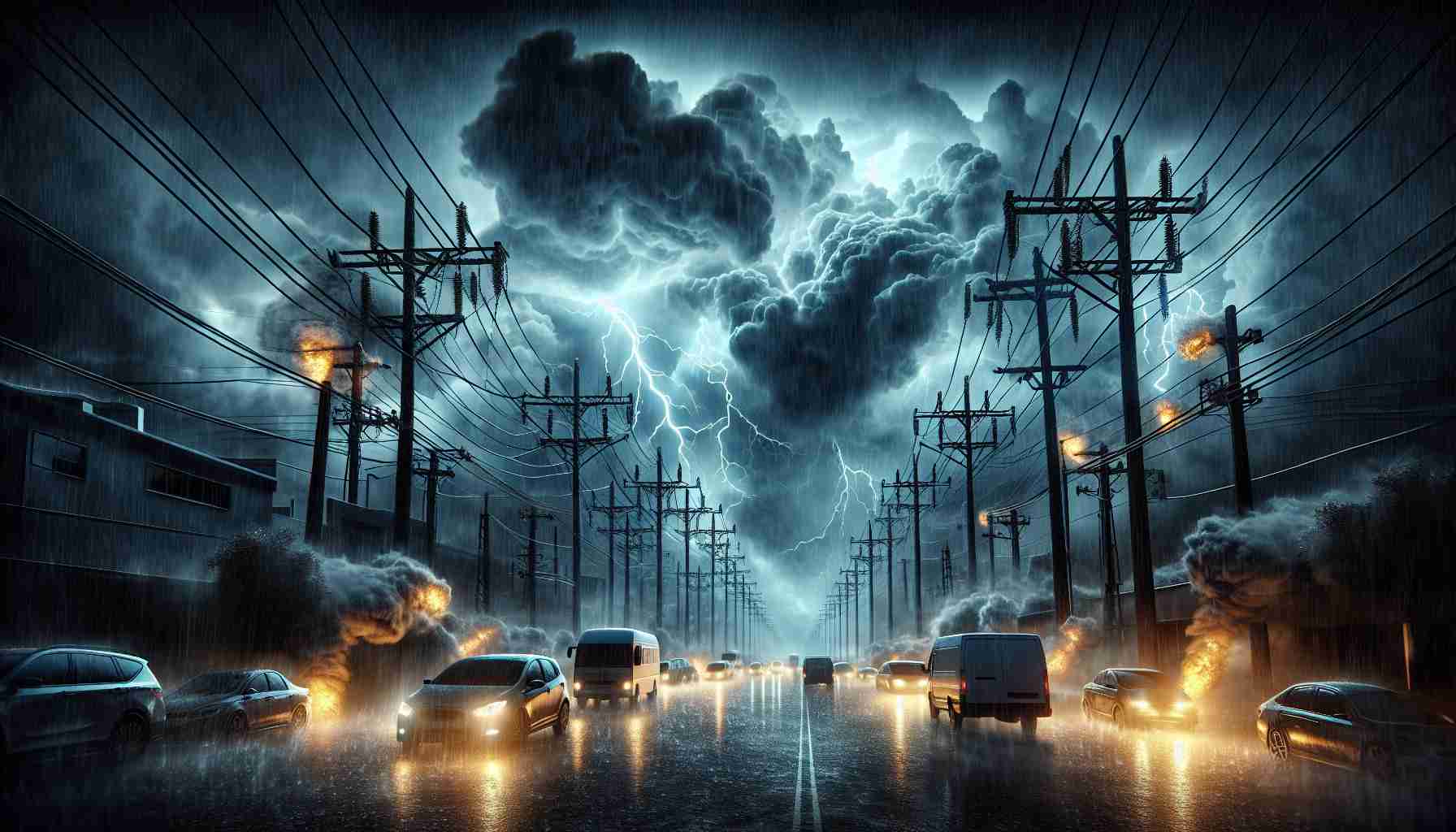- A powerful storm in Victoria caused extensive electrical outages due to intense rain and lightning.
- Approximately 13,500 customers were left without power across several regions including Benalla and Wodonga.
- AusNet deployed ground crews and aerial patrols to assess damage and restore services.
- Local businesses and families experienced significant disruptions, often resorting to candles for light.
- Despite challenges, the dedication of crews illustrates community resilience and preparedness in emergencies.
- Being aware of potential outages and appreciating the efforts of restoration teams can alleviate some frustrations during such events.
An unforgiving storm swept across Victoria, unleashing a torrent of rain and lightning that wreaked havoc on the AusNet network. Over the course of Friday night and into Saturday morning, thousands were plunged into darkness as electrical outages struck with fierce intensity.
Teams of dedicated ground crews and aerial patrols, including two helicopters, worked tirelessly over the Wangaratta and Benalla regions. Their mission? To uncover the storm’s destructive roots, predominantly attributed to dangerously powerful lightning strikes. The impact was widespread, with a staggering 13,500 customers in locales like Benalla, Wodonga, Wangaratta, and Myrtleford left without power.
Local residents faced significant disruptions, grappling with the frustrating absence of electricity during the tumultuous weather. Businesses shuttered and families huddled in candlelight, highlighting the storm’s relentless grip on daily life. Residents watched anxiously as the storm charged overhead, full of awe and concern for what nature could unleash next.
Despite the chaos, AusNet crews remained committed, making significant strides to restore power as swiftly as possible. Their resilience serves as a reminder of the strength of the community in the face of nature’s fury.
The key takeaway? Lightning can strike hard—both literally and figuratively. Stay prepared for sudden outages, and appreciate the tireless efforts of those working behind the scenes to bring light back into our homes after the storm passes.
Uncovering the Aftermath: How Storms Impact Communities and Infrastructure
Overview
A powerful storm recently swept through Victoria, causing significant electrical outages across the AusNet network. This incident, marked by intense rain and lightning, left thousands without power, prompting an immediate response from dedicated crews working around the clock to restore electricity. In addition to the immediate effects of the storm, there are broader implications to consider, such as community recovery, infrastructure resilience, and storm preparedness.
Trends
1. Increased Storm Frequency: Meteorological data suggest that extreme weather events are becoming more common in Victoria due to climate change. This trend indicates a need for better preparedness and infrastructure resilience against future storms.
2. Infrastructure Investment: Following major outages, there has been a push for increased investment in grid resilience and renewable energy sources, helping to mitigate future risks of power outages during storms.
3. Public Awareness Campaigns: Many utility companies are developing campaigns to educate residents about emergency preparedness, including tips for staying safe during storms and how to report outages.
Insights into AusNet’s Response
The swift action taken by AusNet crews highlights the importance of emergency response teams in mitigating the effects of natural disasters. Their efforts are crucial in restoring electricity and ensuring public safety.
Key Considerations
– Limitations of Current Infrastructure: While emergency crews are essential, existing infrastructure often struggles under severe weather conditions, raising questions about how well it can withstand future storms.
– Community Resilience: The community’s ability to bounce back from such storms is directly linked to both the support from utility companies and the preparedness of local residents.
Pricing and Economic Impact
The economic impact of prolonged power outages can be severe, especially for local businesses that rely on electricity. The outages prompted by this storm serve as a reminder for companies to have contingency plans in place and consider backup power solutions, which can range in pricing based on capacity and technology.
Frequently Asked Questions (FAQs)
1. What are the safety measures to take during severe storms?
It is advisable to stay indoors, avoid large windows, and unplug electronic devices. If you’re in an area prone to flooding, have a plan in place for evacuation.
2. How can residents prepare for power outages?
Residents should have an emergency kit ready, including flashlights, batteries, non-perishable food, water, and a backup power source if necessary. Knowing how to report outages and stay informed through local news is also critical.
3. What does the future hold for power infrastructure in storm-prone areas?
As the frequency of severe storms increases, we can expect ongoing discussions about upgrading power infrastructure, incorporating smart grid technologies, and investing in renewable energy sources to enhance resilience.
Conclusion
As storms like the recent one in Victoria highlight the vulnerability of our power infrastructure, it is essential for both utility companies and communities to work together towards effective preparedness and recovery strategies. Continuous innovation and investment are key to increasing resilience against future weather-related challenges.
For more insights on storm preparedness and infrastructure updates, visit AusNet Services.
